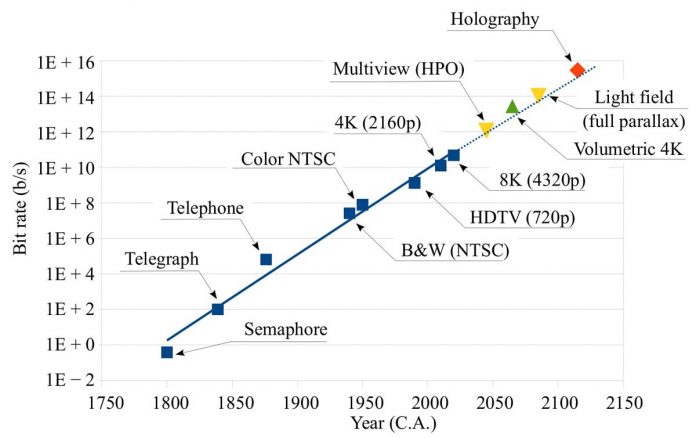The founders of holography have predicted that the ultimate 3D display is going to be based on holography. Holography is the only way to render optical cues that human visual system interprets. Holographic 3D displays are a dream project for scientists. It has also faced challenges as Computation, transmission, and rendering. 6.6 × 1015 flops were needed for calculations. 3 × 1015 b/s data rates and 1.6 × 1012 phase pixels were also required. The whole task was very daunting.
This research paper has been published in Light: Science & Application. University of Arizona Prof. Blanche is reviewing the current accomplishments of holographic 3D display. There is new development in machine learning and neural network algorithms. These developments show computer-generated holograms approaching real-time processing.
The research paper also discusses the problem of data transmission. Rendering hardware is another major problem in holographic 3D display. Larger and faster spatial light modulators have helped in improving holographic projection systems. Liquid crystal on silicon and micro electro-mechanical systems are increasing by millions. New photonic integrated circuit is also progressing. These systems are going to enter the consumer world soon.
Holography is the ultimate way to enable rendering of the optical cues the human visual system needs to see projected images in 3D. Other technologies like stereoscopy, light-field and volumetric displays have problems such as trade-offs that limit 3D rendering. But the new technology will be a stepping stone to have a better visual comfort.
Holographic television will soon become a reality. The fast computation will maintain occlusions and parallax and now it has a solution to the problem of data transmission. The exact nature of the network is unknown. The higher compression rates and faster telecommunication infrastructures supports the Internet mobile communications. This makes the streaming holographic television data feasible.
Some challenges are still there such as the computation of photorealistic 3D holograms in a limited time and a suitable electronic device to reproduce holographic 3D images with high resolution.

